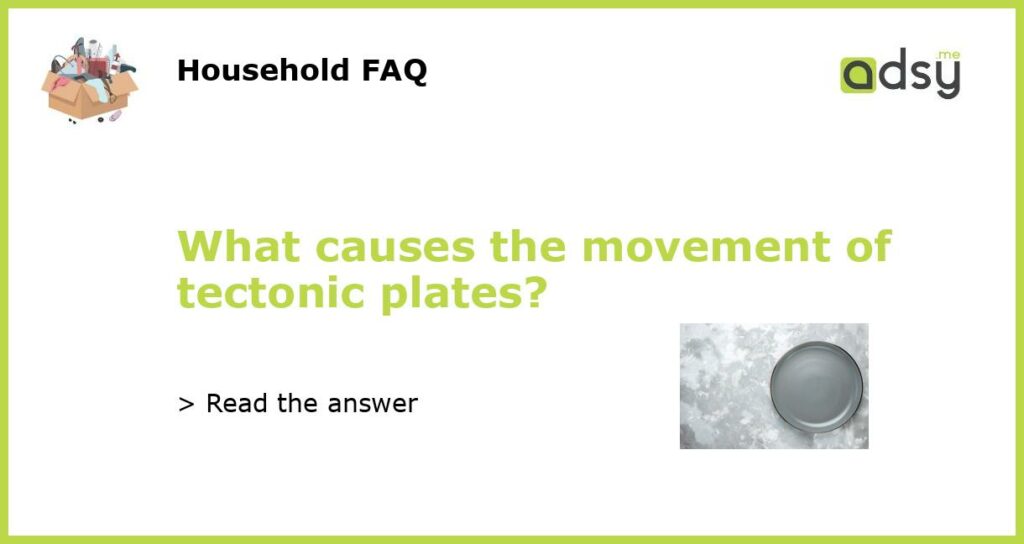How the Earth’s Tectonic Plates Move
The movement of tectonic plates is a fascinating process that has shaped the Earth’s surface over millions of years. It is driven by several factors that interact with each other, resulting in the constant motion of these large, rigid plates. Let’s explore these factors in more detail.
Plate Tectonics: A Brief Overview
Before delving into the causes of plate movement, it’s essential to understand what plate tectonics are. The Earth’s lithosphere, which comprises the crust and part of the upper mantle, is fragmented into several tectonic plates. These plates are positioned on top of a more ductile layer called the asthenosphere. The tectonic plates float and move on the semi-fluid asthenosphere. Over time, they interact, collide, and slide alongside each other, creating various geological phenomena such as earthquakes, volcanoes, and mountain ranges.
Mantle Convection: A Key Driving Force
One of the primary causes of tectonic plate movement is mantle convection. The Earth’s mantle is composed of hot, solid rock that undergoes convection currents. Convection occurs when heat is transferred by the movement of a fluid. In the mantle, this movement is caused by the difference in temperature and density between the hotter, less dense material near the core and the cooler, denser material towards the lithosphere. As hot mantle material rises and cooler material sinks, it creates a circular flow known as a convection current. These convection currents exert a force on the tectonic plates, pushing them apart or dragging them along with the moving mantle.
Ridge Push and Slab Pull: Supplementary Forces
In addition to mantle convection, two other forces, known as ridge push and slab pull, contribute to the movement of tectonic plates. Ridge push occurs at mid-ocean ridges, where new crust is constantly formed as magma rises and solidifies, pushing the older crust away on both sides. This creates a downward force on the plates away from the ridge. On the other hand, slab pull occurs when a dense oceanic plate sinks beneath a less dense continental plate at a subduction zone. The sinking plate creates a pulling force on the rest of the plate, dragging it towards the subduction zone.
Plate Boundaries: Zones of Interaction
The movement of tectonic plates is most evident at their boundaries, where they interact with each other. There are three primary types of plate boundaries: divergent, convergent, and transform. At divergent boundaries, plates move away from each other, creating mid-ocean ridges and rift valleys. This movement is driven by the upwelling of hot mantle material and the ridge push force. Convergent boundaries, on the other hand, occur when plates collide or slide past each other. Subduction zones, where one plate sinks beneath another, are an example of a convergent boundary. Finally, transform boundaries are characterized by plates sliding horizontally past each other, such as the famous San Andreas Fault in California. These different types of plate boundaries all contribute to the overall movement and dynamics of tectonic plates.
Plate tectonics and the movement of tectonic plates are primarily driven by mantle convection, supplemented by ridge push and slab pull forces. Understanding these forces and their interactions at plate boundaries is crucial for comprehending the Earth’s geologic activity, including earthquakes, volcanoes, and the formation of mountains. It is an ongoing process that continually shapes our planet’s surface and influences the distribution of landmasses and oceans across the globe.






